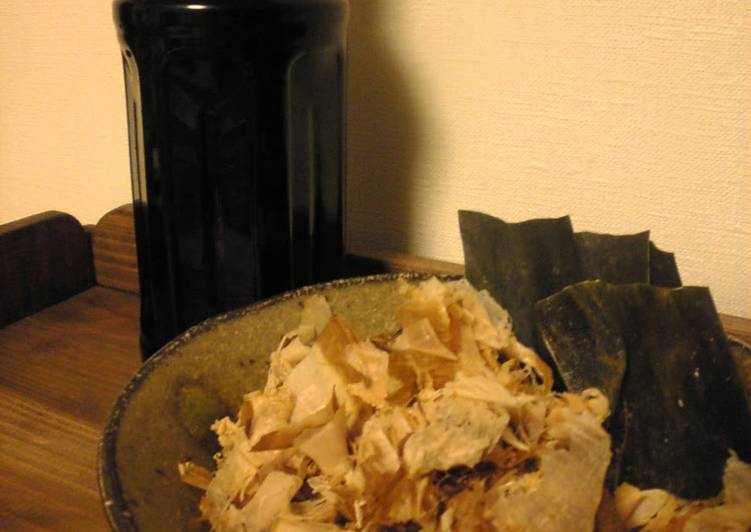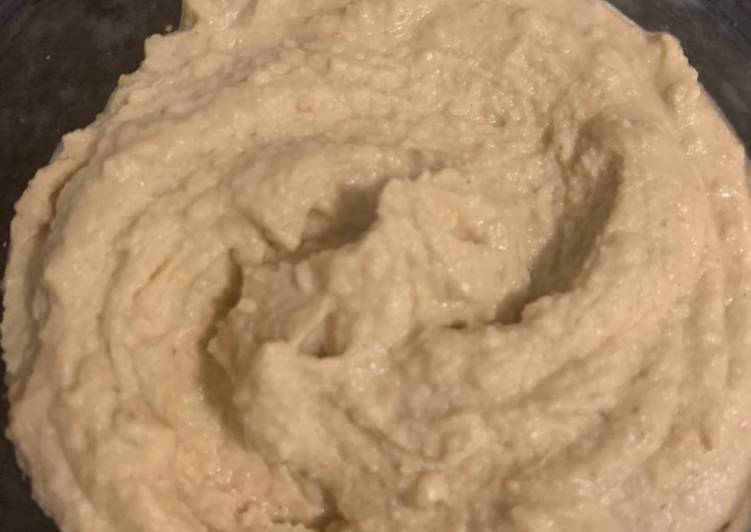
Hello everybody, it’s Louise, welcome to my recipe site. Today, I will show you a way to make a special dish, all-purpose traditional japanese sauce (dashi soy sauce). It is one of my favorites. For mine, I will make it a bit unique. This will be really delicious.
Dashi is very important in Japanese cooking. Making ichiban dashi using kombu and fish flakes(bonito flakes). Bonito is a tuna like fish.
All-Purpose Traditional Japanese Sauce (Dashi Soy Sauce) is one of the most favored of current trending meals in the world. It’s simple, it’s quick, it tastes yummy. It is appreciated by millions every day. All-Purpose Traditional Japanese Sauce (Dashi Soy Sauce) is something that I have loved my whole life. They are fine and they look wonderful.
To get started with this recipe, we have to first prepare a few components. You can have all-purpose traditional japanese sauce (dashi soy sauce) using 6 ingredients and 4 steps. Here is how you cook that.
The ingredients needed to make All-Purpose Traditional Japanese Sauce (Dashi Soy Sauce):
- Prepare 300 ml Soy sauce
- Take 300 ml Sake
- Make ready 200 ml Mirin
- Take 20 grams Bonito flakes (about 2 big handfuls)
- Prepare 10 grams Kombu for dashi stock (about 4 to 5 10 cm x 3 cm pieces)
- Prepare 1 Shredded nori seaweed, white sesame seeds (for the furikake)
The kanji characters for soy sauce or shoyu are 醤油, which literally means 'fermented food oil' - so in Japanese and Chinese there's no 'soy' at all in the 'soy sauce' name. All the dried ingredients that are used to make Japanese soup stock are rich in naturally occurring glutamates and provide intense flavor to the stock. Use when you want a nice savory stock to go with other strong distinct flavors or seasoning like soy sauce, but don't use it. All types of dashi impart a rich, savory taste, thanks to the naturally occurring glutamic acid in the dried ingredients the dashi stock requires.
Steps to make All-Purpose Traditional Japanese Sauce (Dashi Soy Sauce):
- Put all the ingredients except the nori seaweed and sesame seeds into a pan and turn on the heat. Once it comes to a boil, turn the heat down to low and simmer. Continue simmering for 15 to 20 minutes until the liquid has reduced by 2/3.
- Take the pan off the heat, and let cool. When it's cooled, strain it through a fine meshed sieve or paper towels. You'll end up with about 500 ml of dashi.
- How to reuse leftover bonito flakes: Spread it out on parchment paper-lined baking sheet. Bake in an oven preheated to 195-210°F/90-100°C. Around the time you've forgotten about it, it will be nicely dried (about 1 hour). P.S. Be careful not heat the oven too high, this will dry out the flakes. You can also dry-roast in a frying pan.
- Add finely shredded nori seaweed and white sesame seeds, for gorgeous, delicious bonito flake furikake! Store in an airtight container in the refrigerator. I recommend eating this with rice! It's so good!
Japanese dashi is best used on the day it's made. If you have some leftover dashi, however, keep it in a covered container refrigerated for up to a week or freeze to. It is the ultimate general purpose soy sauce that no Japanese pantry should be without. Miso soup (味噌汁, misoshiru) is a traditional Japanese soup consisting of a dashi stock into which softened miso paste is mixed. Along with suimono (clear soup seasoned with a small amount of soy sauce and salt in a dashi stock), Miso soup is considered to be one of the two basic soup types of.
So that’s going to wrap this up for this exceptional food all-purpose traditional japanese sauce (dashi soy sauce) recipe. Thanks so much for your time. I am sure that you will make this at home. There’s gonna be interesting food in home recipes coming up. Don’t forget to save this page on your browser, and share it to your family, colleague and friends. Thanks again for reading. Go on get cooking!


